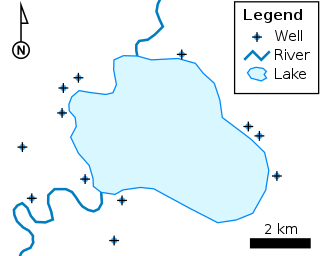A document type definition (DTD) is a specification file that contains set of markup declarations that define a document type for an SGML-family markup language. The DTD specification file can be used to validate documents.

HyperText Markup Language or HTML is the standard markup language for documents designed to be displayed in a web browser. It defines the content and structure of web content. It is often assisted by technologies such as Cascading Style Sheets (CSS) and scripting languages such as JavaScript.

A markuplanguage is a text-encoding system which specifies the structure and formatting of a document and potentially the relationship between its parts. Markup can control the display of a document or enrich its content to facilitate automated processing.

The Standard Generalized Markup Language is a standard for defining generalized markup languages for documents. ISO 8879 Annex A.1 states that generalized markup is "based on two postulates":

Extensible Markup Language (XML) is a markup language and file format for storing, transmitting, and reconstructing arbitrary data. It defines a set of rules for encoding documents in a format that is both human-readable and machine-readable. The World Wide Web Consortium's XML 1.0 Specification of 1998 and several other related specifications—all of them free open standards—define XML.
XSD, a recommendation of the World Wide Web Consortium (W3C), specifies how to formally describe the elements in an Extensible Markup Language (XML) document. It can be used by programmers to verify each piece of item content in a document, to assure it adheres to the description of the element it is placed in.

The Geography Markup Language (GML) is the XML grammar defined by the Open Geospatial Consortium (OGC) to express geographical features. GML serves as a modeling language for geographic systems as well as an open interchange format for geographic transactions on the Internet. Key to GML's utility is its ability to integrate all forms of geographic information, including not only conventional "vector" or discrete objects, but coverages and sensor data.
In computing, RELAX NG is a schema language for XML—a RELAX NG schema specifies a pattern for the structure and content of an XML document. A RELAX NG schema is itself an XML document but RELAX NG also offers a popular compact, non-XML syntax. Compared to other XML schema languages RELAX NG is considered relatively simple.
An XML schema is a description of a type of XML document, typically expressed in terms of constraints on the structure and content of documents of that type, above and beyond the basic syntactical constraints imposed by XML itself. These constraints are generally expressed using some combination of grammatical rules governing the order of elements, Boolean predicates that the content must satisfy, data types governing the content of elements and attributes, and more specialized rules such as uniqueness and referential integrity constraints.
The Darwin Information Typing Architecture (DITA) specification defines a set of document types for authoring and organizing topic-oriented information, as well as a set of mechanisms for combining, extending, and constraining document types. It is an open standard that is defined and maintained by the OASIS DITA Technical Committee.

Learning Object Metadata is a data model, usually encoded in XML, used to describe a learning object and similar digital resources used to support learning. The purpose of learning object metadata is to support the reusability of learning objects, to aid discoverability, and to facilitate their interoperability, usually in the context of online learning management systems (LMS).
Office Open XML is a zipped, XML-based file format developed by Microsoft for representing spreadsheets, charts, presentations and word processing documents. Ecma International standardized the initial version as ECMA-376. ISO and IEC standardized later versions as ISO/IEC 29500.
RDFa or Resource Description Framework in Attributes is a W3C Recommendation that adds a set of attribute-level extensions to HTML, XHTML and various XML-based document types for embedding rich metadata within Web documents. The Resource Description Framework (RDF) data-model mapping enables its use for embedding RDF subject-predicate-object expressions within XHTML documents. It also enables the extraction of RDF model triples by compliant user agents.
The HL7 Clinical Document Architecture (CDA) is an XML-based markup standard intended to specify the encoding, structure and semantics of clinical documents for exchange. In November 2000, HL7 published Release 1.0. The organization published Release 2.0 with its "2005 Normative Edition."
The AgMES initiative was developed by the Food and Agriculture Organization (FAO) of the United Nations and aims to encompass issues of semantic standards in the domain of agriculture with respect to description, resource discovery, interoperability, and data exchange for different types of information resources.
Language resource management Lexical markup framework, is the International Organization for Standardization ISO/TC37 standard for natural language processing (NLP) and machine-readable dictionary (MRD) lexicons. The scope is standardization of principles and methods relating to language resources in the contexts of multilingual communication.
Content Assembly Mechanism (CAM) is an XML-based standard for creating and managing information exchanges that are interoperable and deterministic descriptions of machine-processable information content flows into and out of XML structures. CAM is a product of the OASIS Content Assembly Technical Committee.
The Office Open XML file formats are a set of file formats that can be used to represent electronic office documents. There are formats for word processing documents, spreadsheets and presentations as well as specific formats for material such as mathematical formulas, graphics, bibliographies etc.
A machine-readable document is a document whose content can be readily processed by computers. Such documents are distinguished from more general machine-readable data by virtue of having further structure to provide the necessary context to support the business processes for which they are created.





